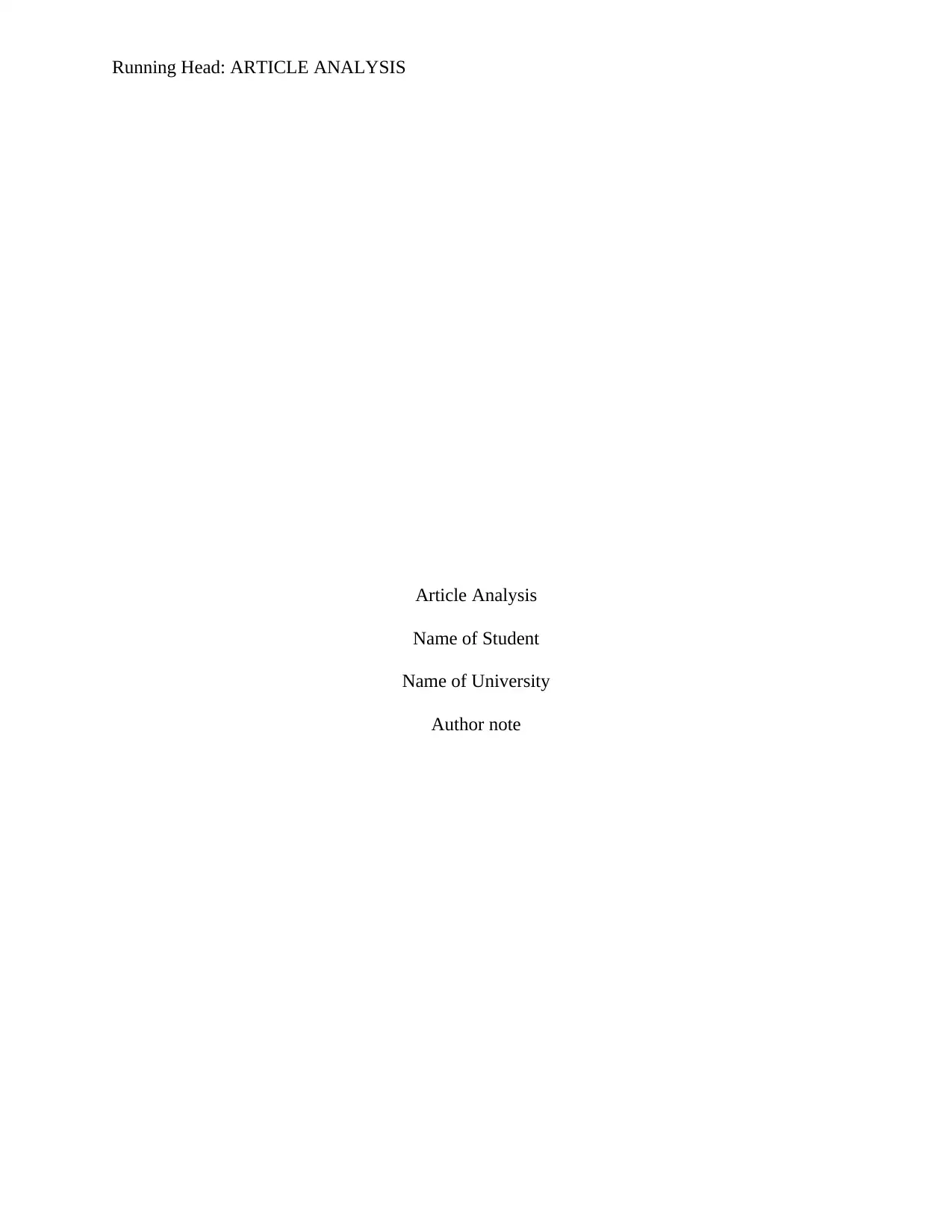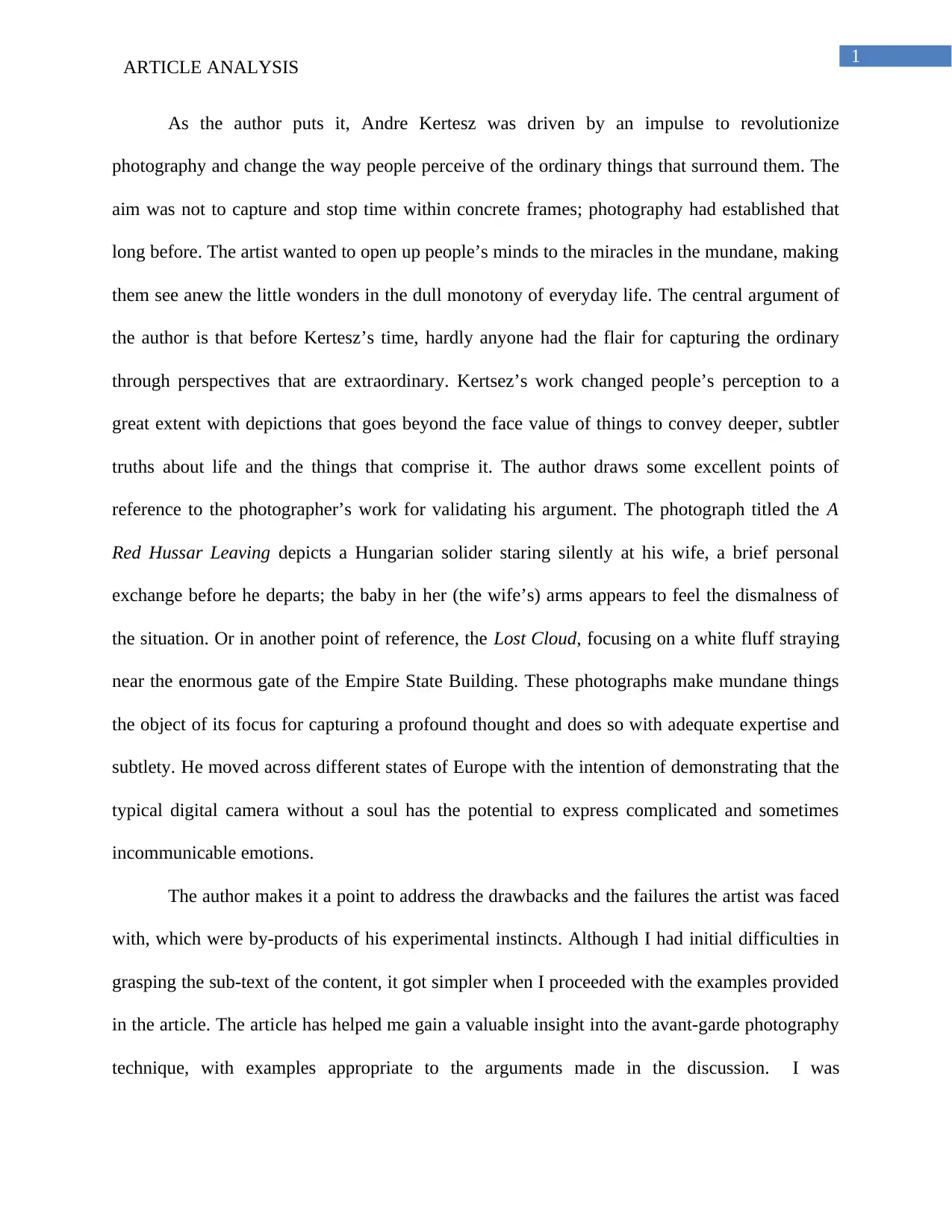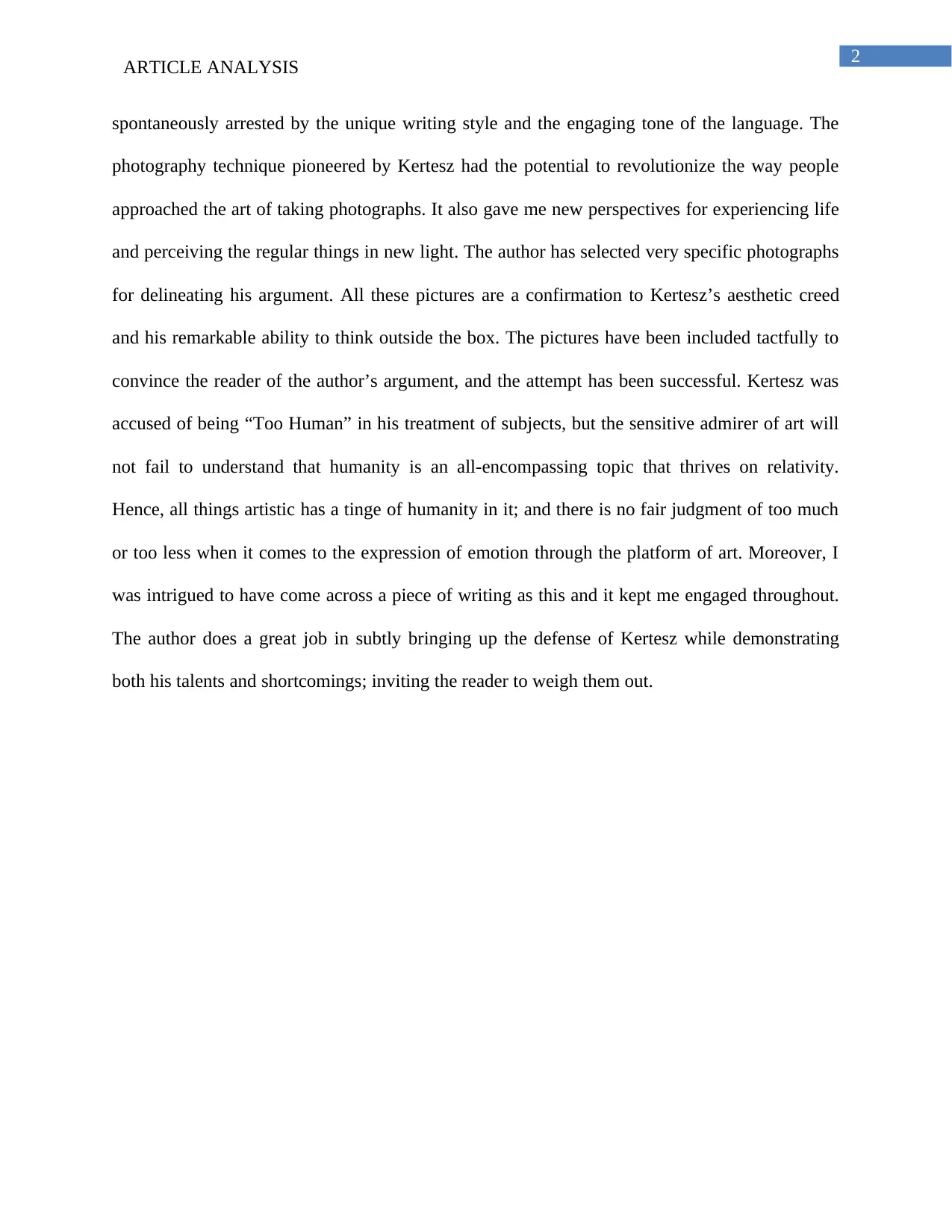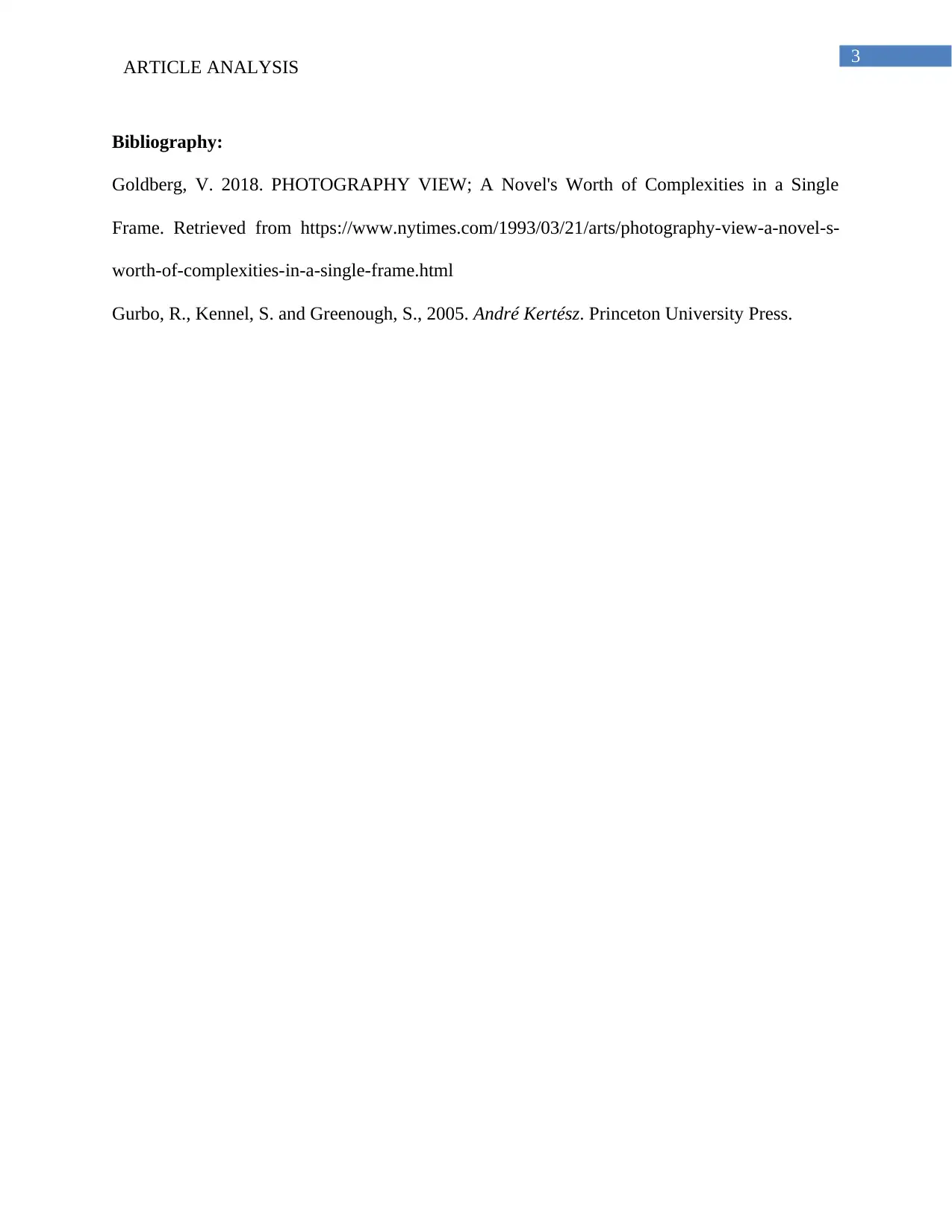Article Analysis: University Photography Techniques of Andre Kertesz
VerifiedAdded on 2023/05/31
|4
|689
|245
Report
AI Summary
This report provides an analysis of an article discussing the photography of Andre Kertesz. The article highlights Kertesz's innovative techniques, emphasizing his ability to capture the extraordinary in the ordinary, and his aim to revolutionize photography by changing how people perceive everyday life. The analysis references specific photographs, such as "A Red Hussar Leaving" and "Lost Cloud," to illustrate Kertesz's unique perspectives and his skill in conveying complex emotions. The author explores the artist's experimental approach, including his challenges and successes. The analysis further discusses the author's writing style, the impact of Kertesz's techniques, and the effective use of selected photographs to support the arguments. The report also includes a bibliography with references to support the analysis.
1 out of 4











![[object Object]](/_next/static/media/star-bottom.7253800d.svg)